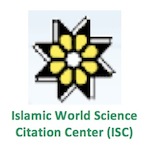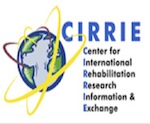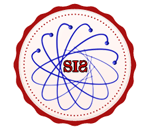


Google Scholar citation report
Citations : 5373
ASEAN Journal of Psychiatry received 5373 citations as per google scholar report
ASEAN Journal of Psychiatry peer review process verified at publons
| Journal Name | ASEAN Journal of Psychiatry (MyCite Report) | ||||
|---|---|---|---|---|---|
| Total Publications | 456 | ||||
| Total Citations | 5688 | ||||
| Total Non-self Citations | 12 | ||||
| Yearly Impact Factor | 0.93 | ||||
| 5-Year Impact Factor | 1.44 | ||||
| Immediacy Index | 0.1 | ||||
| Cited Half-life | 2.7 | ||||
| H-index | 30 | ||||
| Quartile |
|
- Anxiety Disorders
- Behavioural Science
- Biological Psychiatry
- Child and Adolescent Psychiatry
- Community Psychiatry
- Dementia
- Community Psychiatry
- Suicidal Behavior
- Social Psychiatry
- Psychiatry
- Psychiatry Diseases
- Psycho Trauma
- Posttraumatic Stress
- Psychiatric Symptoms
- Psychiatric Treatment
- Neurocognative Disorders (NCDs)
- Depression
- Mental Illness
- Neurological disorder
- Neurology
- Alzheimer's disease
- Parkinson's disease
Abstract
HEALTH-RELATED QUALITY OF LIFE PROFILE IN RELATION TO CHEMOTHERAPY-INDUCED NAUSEA AND VOMITING AMONG BREAST CANCER PATIENTS
Author(s): Pei Lin Lua*, Noor Salihah Zakaria*, Nik Mazlan Mamat**Objective: Despite the availability of modern anti-emetics, chemotherapy-induced nausea and vomiting (CINV) symptoms remain distressing to a high number of cancer patients. This study intended to (1) describe the incidence of CINV and anti-emetic usage; (2) assess the health-related quality of life (HRQoL) and correlate its components with Global Health Status; (3) evaluate HRQoL status in relation to CINV among breast cancer patients receiving chemotherapy.
Methods: A cross sectional study was conducted in two government hospitals located in the East Coast of Peninsular Malaysia (Terengganu, Kelantan). The Morrow Assessment of Nausea and Emesis Follow-up (MANE-FU) and European Organization for Research and Treatment of Cancer Quality of Life Questionnaire (EORTC QLQ-C30) were administered. Descriptive statistics and non-parametric tests were employed (SPSS 16).
Results: Respondents included 41 female patients (age = 49 ± 9.6 years; Malay = 92.7%; no family history of breast cancer = 68.3% and on moderately emetogenic chemotherapy = 97.6%). Majority of patients experienced nausea during or after chemotherapy (90.2%) and rated it as ‘severe’. Most patients had taken anti-emetic (87.8%) and considered it ‘somewhat useful’. The median score for Global Health Status was 50 (IqR= 16.7). Emotional Functioning, Fatigue and Pain correlated fairly with HRQoL (rs= +0.435; -0.417; -0.387 respectively). Patients with ‘a lot’ and ‘moderate’ nausea displayed significantly more fatigue compared to those with little nausea (p=0.029). Those who experienced vomiting reported worse HRQoL profile compared to those who did not (p=0.011).
Conclusion: These findings generally ascertained that CINV remains poorly controlled and significantly interferes with HRQoL, providing rooms for improvements in therapeutic intervention.


























